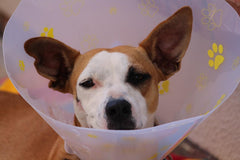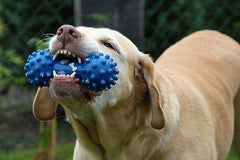
You are watching television in your living room like any typical night, and right before your eyes, you notice your dog acting strange. You soon realize your dog is scooting on the floor. Before you are horrified, please realize that most dogs only do this when they are irritated and in pain. They are trying to scratch an itch, and this movement is the best way to do just that. There are many reasons why your dog may be scooting across your floor, and luckily there are many ways to remedy the problem.
Clogged Anal Glands

One of the most common reasons for your dog’s embarrassing habit has something to do with what is called anal sacs. Dogs have a total of two anal sacs, and even though they are small, they are essential. When a dog has a bowel movement, these anal sacs release a foul smell which many have come to believe is a marker for their scent. Other dogs will be able to pick up the dog’s specific scent because of the fluid.
Typically when a dog poops, this triggers the anal sacs to release the fishy-smelling liquid, but there is a possibility the sacs aren’t working correctly. If this is the case, the fluid can harden, clogging the sacs and further inflaming them. Inflamed anal sacs can be incredibly painful and irritating to dogs which is why you might find them scooting. If you notice they are enlarged, you can try and extract them yourself, but it is recommended to call your veterinarian so they can unclog them professionally. If you accidentally damage the anal sacs, this will only cause more damage and a higher risk of being infected.
Grooming

You might be thinking, how can having my pup groomed cause them to start scooting? They might be allergic to a specific spray that the groomer used or experienced irritation from the clippers. It is not ideal for any spray type, especially those containing perfume in them, to be applied to their bottom, but sometimes these things happen. Look around their tail and bottom for razor burn or tiny cuts; if your dog is rubbing their sides on furniture or rolling around as well, it may be because of a product that was used. Your dog may be allergic, and you should request switching out their shampoo for a gentler option. Oatmeal-based dog shampoo is a better choice for dogs with sensitive skin.
Some groomers might think that they need to express the anal glands while grooming, but it is often unnecessary. If a groomer manually expresses the glands and your dog is scooting, they might have damaged the delicate sacs. If this is something you are concerned about, do not hesitate to call your veterinarian to make an appointment to examine your pup. Do not wait too long because this can cause infection.
Intestinal Parasites

Is your dog’s scooting coupled with vomiting or diarrhea? Your furry pal might be suffering from intestinal parasites, which could be tape or roundworms. Tapeworms result from ingesting fleas with tapeworm larvae, whereas roundworms are from consuming roundworm eggs. The eggs can be found in other animals like birds, cockroaches, rodents, or other dog’s droppings. Both worms can be seen in their feces or vomit, which is a clear indication of what is causing your dog’s scooting.
Dog Scooting Treatment

If your scooting dog is the result of an anal gland problem, it is not uncommon for the vet to prescribe antibiotics after manually expressing the sacs. If you aren’t concerned that your dog’s anal glands need veterinary attention, there are home remedies for dog scooting. A calendula compress is known to naturally bring down the swelling of their anal glands and help them open up to drain themselves. There are also products made specifically for this exact problem. Find a supplement with natural ingredients that help harden their stool which will alleviate any diarrhea, which can help heal their anal glands like psyllium seed husk, beet pulp, and flaxseed. If any of these natural ways don’t help with your dog’s scooting, it would be a good idea to call your vet for professional help.
Conclusion
Seeing your dog scoot is unsightly, but as discussed, this could be the indication that there is a bigger problem going on with your pup. It is ideal to identify the problem of their scooting rather quickly, especially if it has something to do with their anal glands. A clogged anal gland can cause infection, eventually turning into an abscess that can rupture. This is extremely painful and cannot be fixed without surgery to repair the sacs. We discussed many reasons why your dog may be scooting so it is essential first to check the area and look for any tiny cuts, rashes, or inflamed anal glands. Check for signs and symptoms of a sick dog. Inspect your dog’s feces for any worms and call your veterinarian immediately. Your vet will know the proper treatment to get your pup back to its happy self.
What to do when your dog scoots?
How do I get my dog to stop scooting?
What causes a dog to scoot across the floor?
Related Posts:
- Holistic Treatments for Aches and Pains in Your Dog
- Signs of Good Health In Dogs
- Best Puppy Shampoo: What You Need to Know




